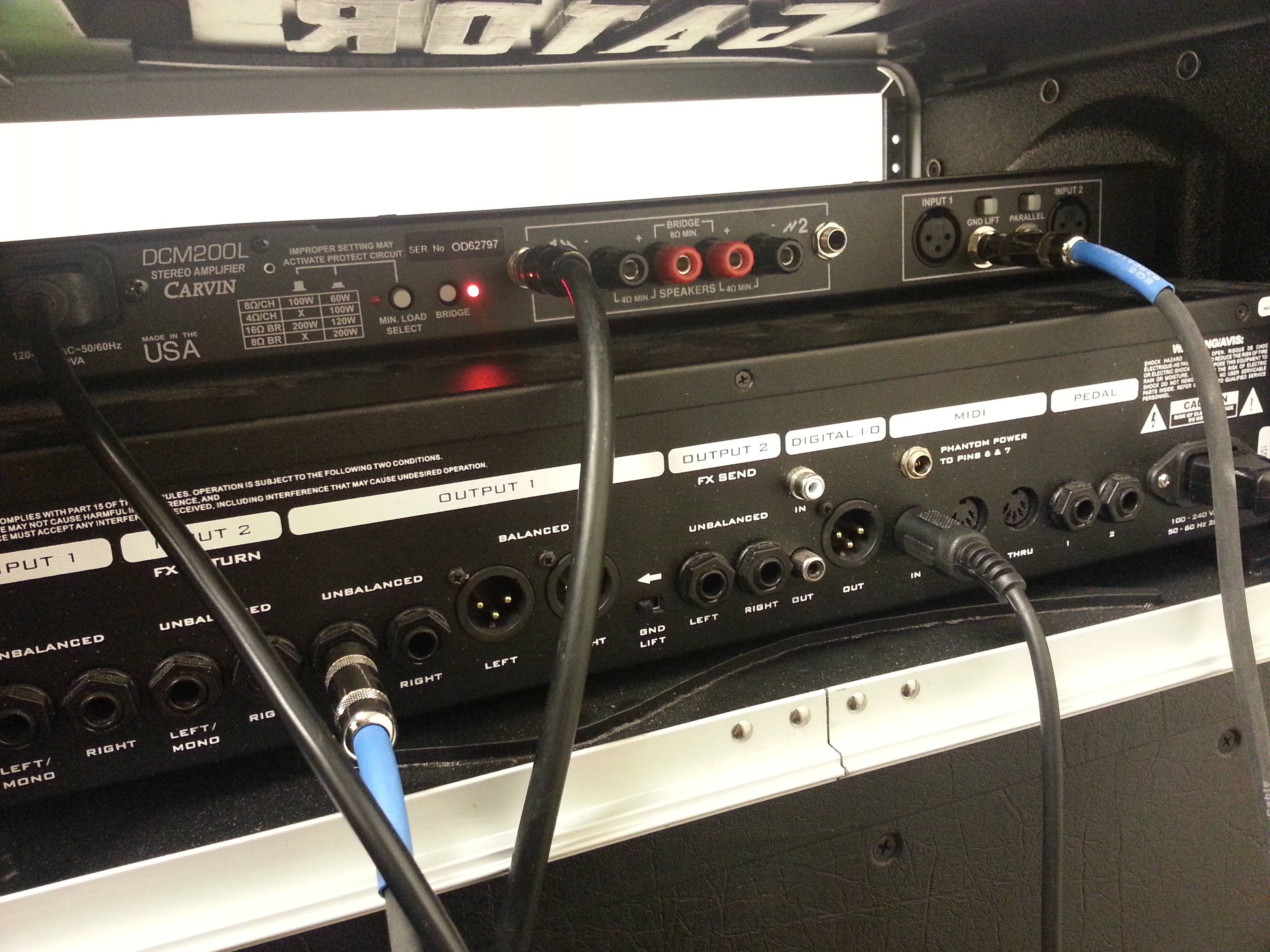I saw that, but looks like orange/blue to me. Either way it would be a mistake to assume anything. Easiest way to check polarity is with a multi-meter.
If you don't have one of those then a 9 volt battery will work, but you have to be able to see the speaker cone for this to work. Simply plug the 1/4" end of the cable into the speaker cab then while looking at the speaker cone touch the two terminals on the battery to the two banana plugs on the other end of the cable. If the polarity is correct the speaker cone will move forward when the battery is applied, if the cone moves backward instead reverse the battery and do it again. When you have the cone moving forward the banana plug attached to the hot or + terminal on the battery is the hot lead and should be plugged into the left(ch 1)red output on the amp with the other going into the right(ch 2) red output.
This is correct, but in the OP's case.. seems there's a little more education required.
No-one in this thread has talked impedance matching and ratings matching.. Given what I have read here, there's a good chance the OP could take the provided feedback, run some BIG amp in bridged mode and blow his cab speakers right away. The DCM200L is not a large amp, but the same rules apply.
SO.. some basics..... (trying to keep it simple and non-technical).
Rule of thumb: An amp (to cater to transient signals and peaks in audio content) should produce 1.5 to 2.25 TIMES the rated (Program, continuous, RMS) power of the speaker cab at the specified load rating (Ohms) of the cab you plan to power.
NOTE: Program, Continuous and RMS ratings are "generally" the same value, but not always. A good way to check is that normal operating wattage is about 50% of PEAK power handling. If PEAK is 500w, then normal operating wattage is probably around 250w.
Example: If you have a 300 watt 8-ohm cab, you should use an amp that produces between (300*1.5) 450w and (300*2.25) 675w at 8-ohms. If you have a 300w 4-ohm cab, your amp needs to produce between (300*1.5) 450w and (300*2.25) 675w at 4-ohms.
Note that most amps are rated at 8 and 4-ohm loads (higher end [$$$] are rated for a 2-ohm load), and the 4-ohm output levels (in watts) is usually around TWICE that of the 8-ohm rating. When you bridge an amp - you are doubling it's output levels and also cutting the load rating in HALF.
Bridging Example: Suppose you have an amp (eg: QSC PLX3102) rated for 550w at 8-ohms per channel, 900w at 4-ohms per channel, and 1550w at 2-ohm per channel loads. Bridged, it can produce 1900w into 8-Ohms or 3100w into 4-Ohms. Again, note that
most amps cannot run with a 2-ohm load in BRIDGED MODE !!!.
Say you have two 8-ohm cabs rated 1000w Program EACH. Connecting each amp channel to a speaker is not enough power - 550w into a 1000w speaker. IF you bridge the amp and daisy-chain (parallel connections) the speakers - have a single cable from back of amp to 1st speaker, then cable from 1st speaker out to 2nd speaker in - you will have a 4-ohm load (approx 8-ohm+8-ohm/4) and the amp will produce 3100w. Each speaker will see 1550w, which is within the rule of thumb margin for a 1000 speaker. The above example can be applied to any size speaker wattage and amp.
The problem occurs when you produce 3100w bridged into a 4-ohm speaker rated for 300w !! You will probably blow iton the first chord.
MAKE SURE YOUR power and IMPEDANCE ratings match up !!
Things get sticky when talking measurements/ratings... different vendors measure output in different ways for both amps and speakers. In Carvin's case, they rate their amps output power (watts) as RMS values - approx. 55% of total output the amp can produce. For the DCM200L, it produces 100w RMS per channel at 8-ohms.. a PEAK of about 180w.
It's rated at 200w RMS bridged at 8-ohms. IT is NOT RATED for a 4-ohm bridged load, so I assume it does not support that.
In other words - in bridged mode, the DCM200L requires an 8-ohm load to produce about 360w PEAK (200w RMS). Connecting a 4-ohm cab will damage/blow the amp. Make sure you
ONLY connect an 8-ohm cab.
PS: NEVER USE GUITAR CABLES BETWEEN an AMP and SPEAKER !!!
Their impedance is WRONG!.. Buy SPEAKER cables...

